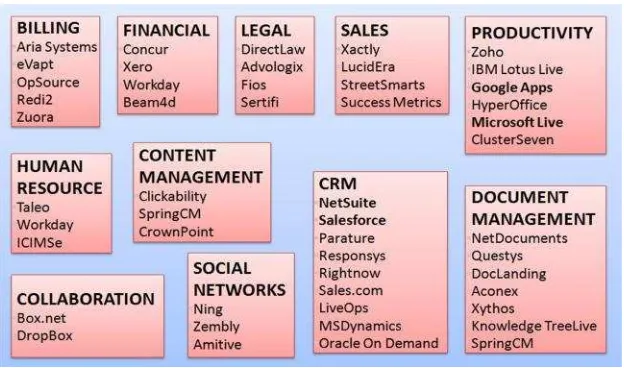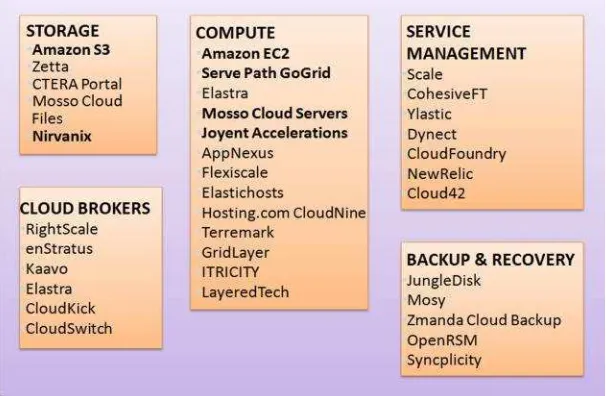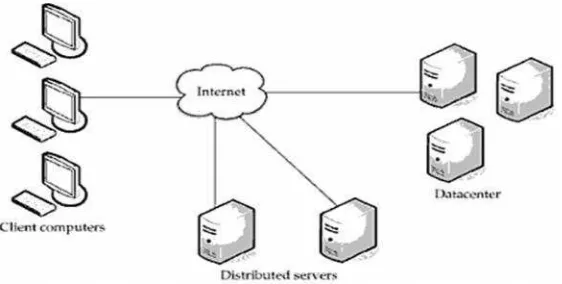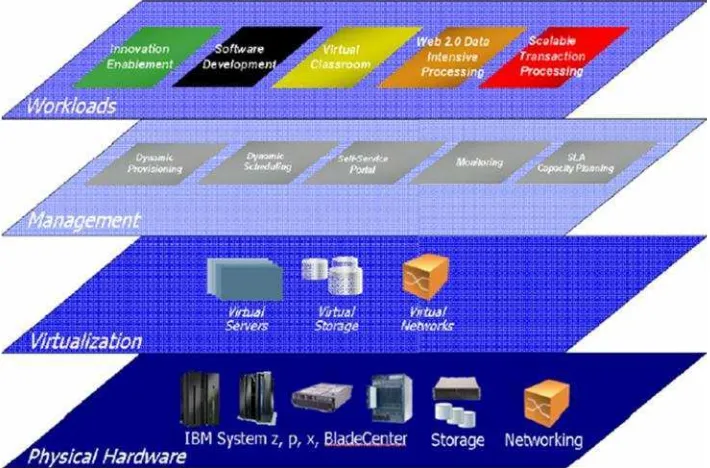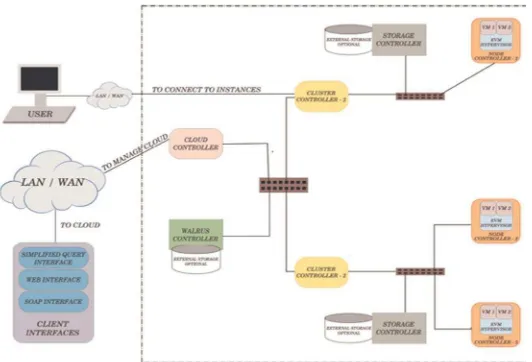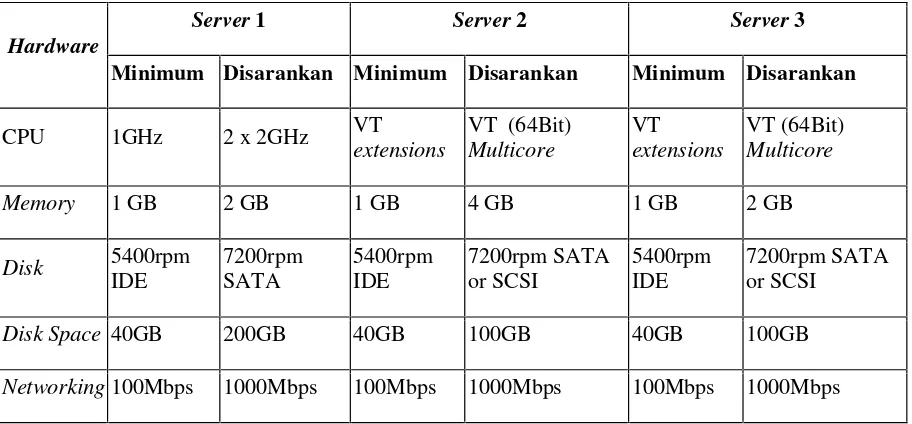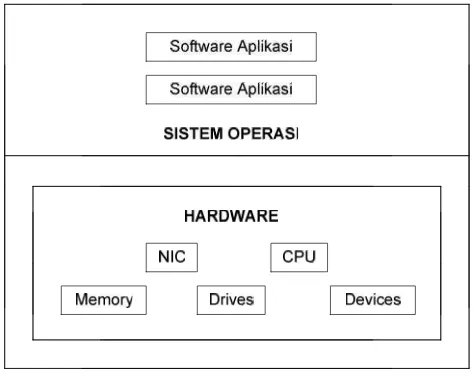Informasi Dokumen
- Penulis:
- Dewinta Elriri
- Sekolah: Universitas Lampung
- Mata Pelajaran: Ilmu Komputer
- Topik: Membangun Private Cloud Di Laboratorium Komputasi MIPA Terpadu Universitas Lampung Sebagai Implementasi Cloud Computing
- Tipe: thesis
- Kota: Lampung
Ringkasan Dokumen
I. INTRODUCTION
This section outlines the background of cloud computing, emphasizing its evolution from grid and utility computing. It highlights the importance of private cloud services for specific users needing data privatization. The introduction also discusses the benefits of cloud computing, including on-demand availability, cost reduction, and resource optimization, making it relevant to educational objectives by illustrating how technology can enhance learning environments.
1.1. Background
The background discusses the growing relevance of cloud computing in technology, especially among IT experts. It explains how cloud computing abstracts resources and delivers them as services via the internet. This paradigm shift reduces costs for software acquisition and updates, making it an essential topic for computer science education, as it prepares students for contemporary technological challenges.
1.2. Problem Statement
The problem statement identifies the central question of how to build a private cloud using Ubuntu Enterprise Cloud in the laboratory setting. This section is crucial for guiding research and practical applications within educational frameworks, as it sets the stage for developing technical skills in cloud infrastructure.
1.3. Scope of the Study
This subsection delineates the boundaries of the research, focusing solely on private cloud computing. By defining these parameters, the study aligns with educational goals by concentrating on specific technologies and methodologies relevant to students' learning experiences in computer science.
1.4. Research Objectives
The objectives aim to implement cloud computing in the laboratory, build infrastructure using open-source software, and optimize existing resources. These goals directly connect to educational outcomes by fostering hands-on experience with cloud technologies, enhancing students' practical skills.
1.5. Research Benefits
The benefits of the research include introducing cutting-edge technology to users and promoting a shift from traditional computing paradigms. This aligns with educational objectives by equipping students with knowledge of modern computing practices, encouraging innovative thinking and problem-solving.
II. LITERATURE REVIEW
This section reviews the foundational concepts of cloud computing, including its definitions, service models, and characteristics. The literature review is essential for providing a theoretical framework that supports the practical implementation of cloud technologies in educational settings, enhancing students' understanding of key principles.
2.1. Cloud Computing
Cloud computing is defined as a model that provides on-demand network access to a shared pool of configurable computing resources. This definition is critical for students to grasp the fundamental aspects of cloud technologies, which are increasingly integrated into modern educational practices.
2.1.1. Cloud Service Models
The review describes various service models such as SaaS, PaaS, and IaaS, emphasizing their relevance to educational institutions. Understanding these models allows students to appreciate how different cloud services can be leveraged for academic purposes, enhancing their learning experiences.
2.1.2. Types of Cloud
Different types of clouds, including private, public, and hybrid, are discussed. This classification helps students recognize the appropriate cloud solutions for various educational contexts, fostering critical thinking about resource allocation and data management.
2.1.3. Characteristics of Cloud Computing
The section outlines essential characteristics such as on-demand self-service and broad network access. These characteristics are vital for students to understand the operational efficiencies that cloud computing can offer, which are applicable in their future careers.
2.1.4. Advantages and Challenges of Cloud Computing
The benefits of cloud computing, including cost savings and data security, are contrasted with challenges like privacy concerns and dependency on internet connectivity. This balanced view equips students with a comprehensive understanding of the implications of adopting cloud technologies in educational settings.
III. RESEARCH METHODOLOGY
This section details the qualitative research approach employed in the study, including data collection methods such as literature review, observation, and documentation. Understanding research methodologies is crucial for students as it enhances their analytical skills and prepares them for future academic research.
3.1. Research Type
The research is categorized as qualitative, focusing on descriptive data collection and analysis. This classification helps students appreciate the importance of qualitative research in understanding complex technological phenomena.
3.2. Data Sources
Primary and secondary data sources are identified, emphasizing the significance of diverse data in research. This knowledge is essential for students as it teaches them how to gather and validate information effectively.
3.3. Data Collection Techniques
Various techniques such as literature review and observation are employed to gather data. Learning about these techniques enables students to apply appropriate methods in their research projects.
3.4. Data Analysis Techniques
The section describes how data is analyzed to ensure accuracy and reliability. Understanding data analysis is vital for students as it underpins their ability to draw meaningful conclusions from research findings.
IV. RESULTS AND DISCUSSION
This section presents the findings from the research, discussing the implementation of the private cloud and its operational challenges. The discussion is significant for students as it bridges theoretical knowledge with practical application, reinforcing their learning outcomes.
4.1. Implementation of the Private Cloud
The successful implementation of the private cloud using Ubuntu Enterprise Cloud and Eucalyptus is detailed. This practical example illustrates the application of theoretical concepts in real-world scenarios, enhancing students' understanding of cloud technologies.
4.2. Challenges Faced
The challenges encountered during the implementation, such as connectivity issues and software bugs, are discussed. Analyzing these challenges prepares students for problem-solving in their future careers, emphasizing resilience and adaptability.
V. CONCLUSION AND RECOMMENDATIONS
The conclusion summarizes the key findings and offers recommendations for future research and improvements. This section is crucial for students as it encourages critical reflection on their learning and the potential for further exploration in cloud computing.
5.1. Conclusion
The conclusion highlights the successful establishment of a private cloud and its implications for resource optimization in educational settings. This reinforces the relevance of cloud computing in modern education.
5.2. Recommendations
Recommendations for future research and improvements in cloud infrastructure are provided. This encourages students to think critically about ongoing developments in technology and their implications for educational practices.

